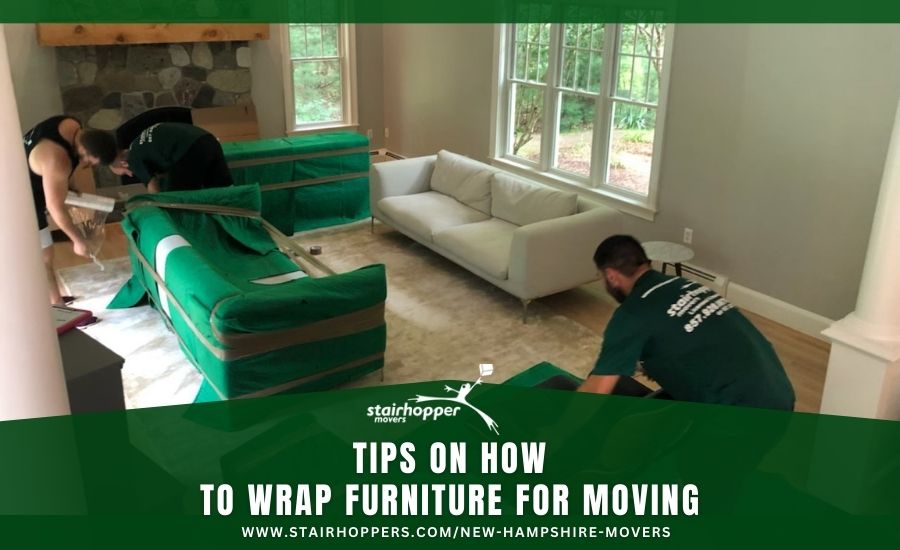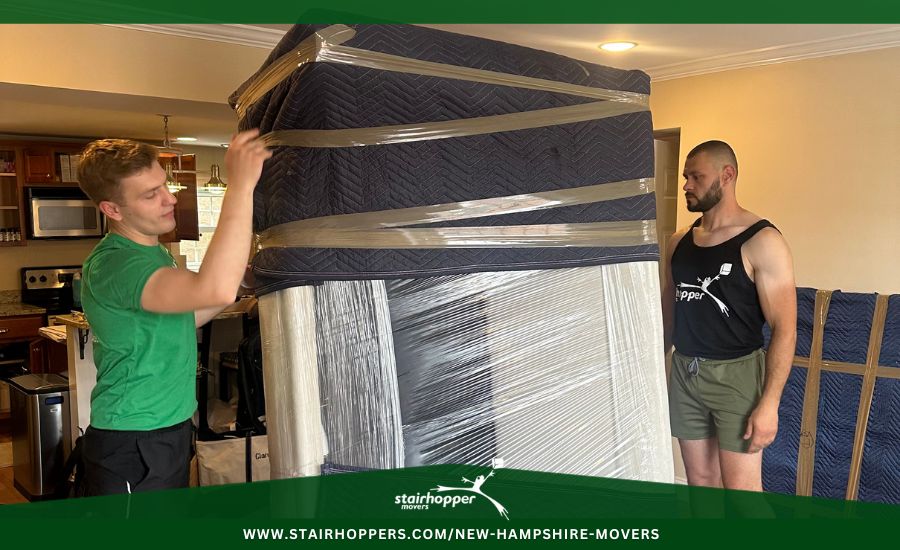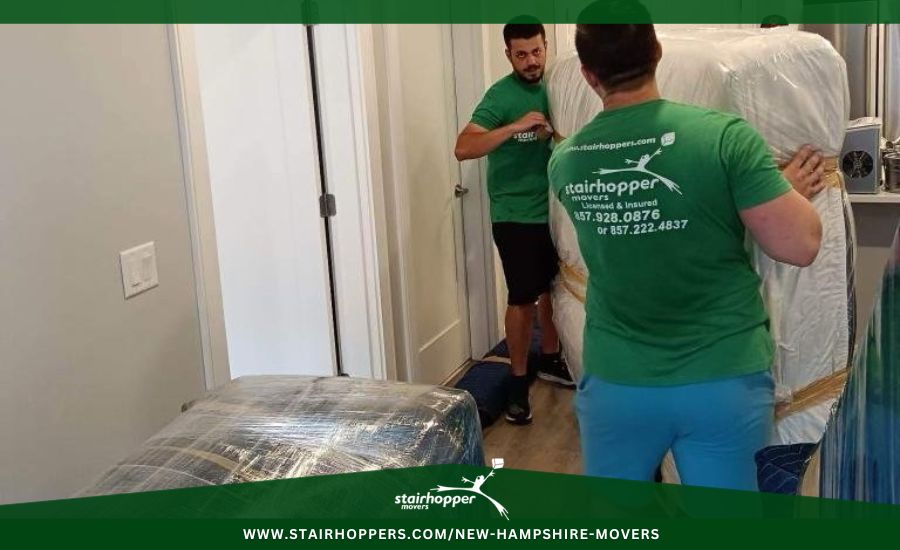Tips on How to Wrap Furniture For Moving

Moving homes is a significant milestone in anyone’s life. It signifies new beginnings, fresh experiences, and a change in environment. But, with this excitement comes the responsibility of ensuring that your cherished furniture pieces make it to the new place unscathed. Properly wrapping your furniture is the cornerstone of a damage-free move. This guide will provide you with comprehensive insights into the art and science of how to wrap furniture for moving, ensuring that your memories remain intact.
Why Properly Wrapping Your Furniture is Crucial
Furniture is more than just functional pieces in our homes; they are repositories of memories. The couch where you snuggled during cold winter nights, the dining table that witnessed countless family dinners, or the dresser passed down through generations – each piece has a story. Protecting these narratives is essential. Proper wrapping acts as a shield against potential damages during the tumultuous moving process. But it’s not just about emotional value. The financial implications of damaged furniture can be hefty. Repairing or replacing a damaged piece can burn a hole in your pocket. Moreover, well-wrapped furniture simplifies the moving process, reducing potential hiccups and ensuring a smoother transition to your new abode.
Preparing Your Furniture for Moving
Before diving into the wrapping process, preparation is key:
Inventory Your Furniture Pieces
Begin with a detailed list. This inventory acts as a roadmap, guiding you through the packing process, and ensuring no piece is overlooked. It also helps in determining the amount of wrapping material you’ll need.
Measure Your Furniture
Dimensions are crucial. They help in procuring the right amount of wrapping materials and ensure a seamless fit in your new home. Use a tape measure to get accurate dimensions.
Assess Your Furniture’s Condition
A meticulous examination can reveal hidden damages. This is also an opportune moment to decide if some pieces are better off being sold or donated. Make a note of any scratches, dents, or stains.
Clean Your Furniture
A simple wipe-down can prevent potential scratches caused by dust or debris during the move. Use a damp cloth to clean surfaces and vacuum upholstered items.
Disassemble Your Furniture
Bulky furniture can be cumbersome. Breaking them down into smaller components simplifies the wrapping process. Keep screws and bolts in labeled bags.
Have a Placement Plan
Envisioning the placement of each piece in your new home can expedite the unpacking process. Sketch a rough floor plan of your new home and decide the placement in advance.
Pack Sections That Can Fit Into Boxes
Small detachable components, like cushions or knobs, can be boxed for added protection. Use sturdy boxes and label them clearly.
Securing Loose Drawers and Doors
Before moving, ensure that all drawers and doors are securely fastened. This prevents them from swinging open during the move, which can lead to damage or injury. Use stretch wrap or moving straps to keep them in place. If possible, remove drawers and pack them separately.
Essential Packing Materials
The arsenal of packing materials is vast, but choosing the right ones is paramount:
Moving Blankets and Mattress Covers
These robust materials offer unparalleled protection against potential dents and scratches. They are thick, padded, and can be wrapped around furniture pieces and secured with tape. Mattress covers, on the other hand, are perfect for protecting your mattresses from dust, dirt, and moisture.
Foam Padding and Dish Protection Kits
These are your go-to materials for fragile items, cushioning them against the rigors of the move. Foam padding can be cut to size and used to protect the edges and corners of furniture. Dish protection kits come with foam pouches and dividers, perfect for packing dishes and glassware.
Bubble Wrap vs. Packing Paper
Bubble wrap, with its cushioning bubbles, is perfect for delicate items. It provides an air-cushioned layer that protects against shocks. Packing paper, on the other hand, is the jack-of-all-trades, suitable for wrapping almost any furniture piece. It’s versatile, recyclable, and can be crumpled to fill gaps in boxes.
Things to Not Do When Packing Furniture for Moving
The road to perfection is littered with potential pitfalls. Here are some common mistakes to sidestep:
- Avoid Rushing: Good things take time. Hastiness can lead to oversight and potential damages.
- Avoid Skimping on Materials: Quality matters. Opting for subpar materials can jeopardize the safety of your furniture.
- Avoid Neglecting Labels: A well-labeled box simplifies the unpacking process.
- Avoid Overlooking Loose Parts: Ensure all detachable components are secured.
- Avoid Using Direct Tape on Surfaces: This can leave residues or damage finishes.
Wrapping Techniques and Best Practices
Wrapping is more than just covering; it’s about ensuring each piece is shielded from potential damages:
Avoid Direct Contact
Materials like bubble wrap or tape can damage wooden surfaces. Always use a barrier. For instance, if you’re wrapping a wooden table, first cover it with a blanket or packing paper. Then, you can add a layer of bubble wrap for added cushioning. This ensures that the bubble wrap or tape doesn’t leave any residue or marks on the wood.
Packing Furniture Sections
Individual wrapping of disassembled parts ensures comprehensive protection. For example, if you’ve taken apart a dining table, wrap each leg separately. This not only makes it easier to move but also ensures that each part is adequately protected. Use bubble wrap or foam padding for delicate or pointed ends, and secure with tape.
Trust the Experts: Make Your Move With StairHoppers
The journey of moving, while exhilarating, is fraught with challenges. Ensuring the safety of your cherished furniture is paramount. The guidelines above aim to arm you with the knowledge to navigate this journey seamlessly. And for those seeking expert movers in Merrimack, NH, Stairhopper Movers stands ready to ensure your move is smooth and hassle-free.
Frequently Asked Questions
What are the essential wrapping and packing supplies for furniture?
Your furniture’s safety during a move largely depends on the wrapping and packing materials you choose. The right supplies can make all the difference in ensuring your items remain damage-free. Some of the most popular and effective options include bubble wrap for cushioning delicate items, stretchable plastic wrap for securing loose parts and moving blankets for providing a padded shield against potential dents and scratches.
How can I protect my wood furniture when moving?
Protecting wood furniture requires a bit of extra care. Start by cleaning the surface to remove any dust or debris. Use furniture pads or moving blankets to wrap the item, ensuring no direct contact with tapes or other adhesives that might leave a residue. For larger pieces like armoires or dining tables, consider using a furniture dolly for easier transportation. Always enlist the help of others when moving heavy items to prevent accidental drops or damage.
How should I prepare furniture sections for moving?
Before wrapping, it’s essential to prepare your furniture. For tables, unscrew the legs and keep them separately. For dressers and desks, remove knobs and other detachable parts. Always store screws and other fixings in labeled plastic bags. This ensures you have everything you need to reassemble them at your new home. Planning and organizing your furniture sections can simplify the wrapping process and reduce the chances of missing or damaging any parts.
Why is having a placement plan important before wrapping furniture for moving?
A placement plan is crucial as it helps you envision where each furniture piece will go in your new home. By knowing the final location of each item, you can prioritize your packing, ensuring that essential pieces are easily accessible. This foresight can also help in determining which items to disassemble and how to pack them efficiently. A well-thought-out placement plan can expedite the unpacking process, making your move smoother.
How can I ensure that I don’t forget any important items when wrapping furniture?
The key to not forgetting any crucial items is organization. Start by creating an inventory of all your furniture pieces. As you wrap and pack each item, check it off your list. This not only ensures that you don’t overlook anything but also gives you a sense of accomplishment as you progress through your packing. Additionally, always double-check rooms, closets, and storage areas before finalizing your move.


